





Rotsefin
Application instruction:
 Rotsefin – bactericidal drug for parenteral use from group of cephalosporins III of generation, a wide range of long action concerning gram-positive and gram-negative microorganisms.
Rotsefin – bactericidal drug for parenteral use from group of cephalosporins III of generation, a wide range of long action concerning gram-positive and gram-negative microorganisms.
Form of release and structure
Dosage form – powder: from white till yellowish-orange color from which prepare:
- solution for intramuscular introduction (in oil): on 0,25 g, 0,5 g or 1 g of powder in the glass bottles of a hydrolytic class 1 EF corked by the butylrubber stopper which is pressed out by an aluminum cap, closed by a plastic cover complete with hermetically soldered ampoule of 1% of solution of lidocaine: 2 ml – for Rotsefin of 0,25 g and 0,5 g or 3,5 ml for Rotsefin of 1 g; the ampoule with solvent is equipped with a point of blue color, on a tip two rings of green and blue color are put; in a cardboard pack 1 set;
- solution for intravenous (in/in) introductions: on 0,25 g, 0,5 g or 1 g of powder in the glass bottles of a hydrolytic class 1 EF corked by the butylrubber stopper which is pressed out by an aluminum cap, closed by a plastic cover complete with hermetically soldered ampoule with water for injections: 5 ml – for Rotsefin of 0,25 g and 0,5 g or 10 ml for Rotsefin of 1 g; the ampoule with solvent is equipped with a point of blue color; in a cardboard pack 1 set;
- solution for infusions: on 2 g of powder in the glass bottles of a hydrolytic class 1 EF corked by the butylrubber stopper which is pressed out by an aluminum cap, closed by a plastic cover; in a cardboard pack 1 bottle;
- solution for in/in and introductions in oil: on 1 g of powder in the glass bottles of a hydrolytic class 1 EF corked by the butylrubber stopper which is pressed out by an aluminum cap, closed by a plastic cover; in a cardboard pack 1 bottle; in a cardboard box 143 bottles (for hospitals).
For preparation of solution for introduction in oil contains in 1 set:
- active ingredient (1 bottle with powder): цефтриаксон – 0,25 g, 0,5 g or 1 g (in the form of a tseftriakson of disodium salt of 0,2983 g, 0,5965 g or 1,193 g);
- solvent: lidocaine solution of 1%.
For preparation of solution for in/in introductions contains in 1 set:
- active ingredient (1 bottle with powder): цефтриаксон – 0,25 g, 0,5 g or 1 g (in the form of a tseftriakson of disodium salt of 0,2983 g, 0,5965 g or 1,193 g);
- solvent: water for injections.
1 bottle with powder for preparation of solution for infusions contains active ingredient: цефтриаксон – 2 g (in the form of a tseftriakson of disodium salt of 2,386 g).
1 bottle with powder for preparation of solution for in/in and introductions in oil contains active ingredient: цефтриаксон – 1 g (in the form of a tseftriakson of disodium salt of 1,193 g).
Indications to use
Rotsefin apply to therapy of the following infectious damages caused by the activators sensitive to a tseftriakson:
- tick-borne borreliosis (Lyme's disease) in a stage of the disseminated infection;
- infections of digestive tract and bilious ways, peritonitis, other infections of abdominal organs;
- infections of skin, joints, bones, soft tissues, and also wound defeats;
- infectious diseases at patients with the weakened immunity;
- infections of urinary tract and kidneys;
- pneumonia, infections of ENT organs, other damages of airways;
- infections of generative organs, including gonorrhea;
- meningitis;
- sepsis.
Also the antibiotic is used for perioperatsionny prevention of infections.
Contraindications
Drug is contraindicated at hypersensitivity to cephalosporins, in t. h to a tseftriakson, and also to any other component of solution.
It is impossible to use Rotsefin in the presence of data in the anamnesis on heavy reactions of hypersensitivity (for example, anaphylactic) to other 5-laktamny antibiotics, such as penicillin, karbapenema and monobaktama.
With care, in view of the increased risk of complications, it is recommended to use drug during breastfeeding (lactation), at a hyperbilirubinemia at newborns, especially at premature, and also in case of hypersensitivity to penicillin.
Route of administration and dosage
Solution Rotsefin is entered intramusculary or intravenously.
The recommended dosing mode for adults and children is more senior than 12 years, weighing more than 50 kg – 1-2 g at an interval of the 24th hour once a day. In case of the heavy infections or infections caused by activators, moderately sensitive to a tseftriakson, about 4 g are allowed to increase a daily dose. Duration of a course of therapy depends on the clinical course of a disease. However Rotsefin it is necessary to continue administration of drug at least 2-3 more days after confirmation of an eradikation of the activator and normalization of temperature, as well as always at an antibioticotherapia.
Standardly the course makes 4-14 days, but at the complicated infections more long treatment at the discretion of the attending physician can be required.
The infections caused by Streptococcus pyogenes demand a therapy course not less than 10 days.
General rules for use of solutions: administration of drug is made right after preparation. Chemical and physical stability of the prepared solutions remains at the room temperature – within 6 hours, at a temperature of 2-8 °C (in the refrigerator) – within 24 hours. Color of solutions can vary, depending on duration of storage and concentration, from amber-yellow to pale yellow. At the same time coloring does not influence portability of drug or its efficiency.
Ways of preparation and use of solution Rotsefin:
- injection in oil: 0,25 g or 0,5 g of Rotsefin dissolve in 2 ml, 1 g – in 3,5 ml of 1% of solution of lidocaine; the prepared solution is entered deeply into rather big muscle (buttock); it is recommended to enter no more than 1 g into the same muscle; it is impossible to enter the solution containing lidocaine intravenously;
- in/in an injection: 0,25 g or 0,5 g of Rotsefin dissolve in 5 ml, 1 g – in 10 ml of sterile water for injections; enter slowly, preferably into large veins, for 5 minutes;
- in/in infusionally: 2 g of Rotsefin part in 40 ml of one of the following which is not containing calcium ions, infusion solutions: water for injections, 0,45% chloride sodium solution from 2,5% solution of a dextrose, 0,9% solution of sodium of chloride, 6-10% solution of hydroxyethylstarch, 5% or 10% solution of a dextrose, 6% dextran solution in 5% dextrose solution; it is impossible to mix or add Rotsefin to the solutions containing other antimicrobic drugs or other solvents except for listed above, in connection with possible incompatibility; infusion has to last not less than half an hour.
For preparation of solutions of drug Rotsefin for in/in introductions and their cultivations further it is impossible to use solvents with the content of calcium (Hartman or Ringer's solution, for example) because of probability of formation of precipitated calcium superphosphates of calcic salts of a tseftriakson which is also possible when mixing drug Rotsefin and kaltsiysoderzhashchy solutions in case of use of one venous access.
It is also impossible to use Rotsefin along with kaltsiysoderzhashchy solutions for in/in introductions, including long infusions of kaltsiysoderzhashchy drugs, at parenteral food, for example, with use of the Y-connector. At the same time for all groups of patients, except newborns, consecutive introduction of Rotsefin and kaltsiysoderzhashchy solutions after careful washing of infusional systems by compatible liquid between injections is allowed.
There are no data on interaction of peroral kaltsiysoderzhashchy medicines and a tseftriakson, and also tseftriakson for introduction in oil and drugs, calciferous, for intravenous or oral administration.
At Rotsefin's appointment once a day children from the period of a neonatality to 12 years are recommended to observe the following mode of dosing:
- from the birth up to 14 days: 0,02-0,05 g/kg of body weight, but no more than 0,05 g/kg;
- 15 days-12 of years: 0,02-0,08 g/kg of body weight;
- up to 12 years, but weighing more than 50 kg: use the dosing mode for adults.
Use of a tseftriakson to contraindicated premature children up to 41 weeks inclusive (totally chronological and gestational age). Rotsefin is contraindicated to newborns 28 days which already carry out or suppose carrying out in/in therapy kaltsiysoderzhashchy solutions, including long kaltsiysoderzhashchy infusions, for example, at parenteral food, because of risk of formation of precipitated calcium superphosphates of calcic salts of a tseftriakson are younger.
Doses or above to babies and children up to 12 years enter into 0,05 g/kg kapelno throughout not less than half an hour. Carry out to infusion by the newborn within an hour (for reduction of potential risk of development of bilirubinovy encephalopathy).
The recommended therapy courses depending on a disease:
- bacterial meningitis at children (chest and younger age): therapy begin with a dose 0,1 g/kg (as much as possible – to 4 g) 1 time a day; after identification of the activator, and also definition of its sensitivity the dose is recommended to be reduced respectively. The best results were achieved at duration of therapy of a spotted fever – 4 day, the meningitis caused by Haemophilus influenzae – 6 days, the meningitis caused by Streptococcus pneumoniae – 7 days;
- tick-borne borreliosis (Lyme's disease): 0,05 g/kg (as much as possible – to 2 g) 1 time a day, to adults and children, a therapy course – 14 days;
- the gonorrhea (caused by strains of microorganisms penitsillinazoobrazuyushchy and penitsillinazoneobrazuyushchy): single introduction of 0,25 g in oil of drug Rotsefin to adult patients and children is more senior than 12 years, weighing more than 50 kg;
- acute average otitis: single introduction in oil in the following doses: to children – 0,05 g/kg (as much as possible – to 1 g), adult – 1-2 g; in case of heavy infection or at inefficiency of the previous therapy (according to limited data) Rotsefin can be effective also at introduction of a daily dose in oil of 1-2 g for 3 days;
- perioperatsionny prevention: once from 1 to 2 g of a tseftriakson (depending on degree of infectious risk) in 30-90 min. prior to the beginning of surgical intervention; for operation on thick and a rectum at the same time, but separately, enter Rotsefin and one of 5 nitroimidazoles, for example, орнидазол.
At advanced and senile age dose adjustment of a tseftriakson is not required on condition of lack of heavy renal failures and/or a liver.
Side effects
Most often in clinical trials against the background of therapy tseftriaksony the following undesirable reactions were registered: leukopenia, eosinophilia, thrombocytopenia, rash, increase in activity of liver enzymes, diarrhea.
The description of frequency of undesirable reactions according to classes of bodies and systems, with use of the following classification:> 1/10 – very often,> 1/100-<1/10 – it is frequent,> 1/1000-<1/100 – infrequently,> 1/10 000-<1/1000 – seldom, <1/10 000, including isolated cases – it is very rare:
- infections and invasions: infrequently – fungal infections of generative organs; seldom – pseudomembranous colitis;
- system of blood and lymphatic system: often – a leukopenia, thrombocytopenia, an eosinophilia; infrequently – anemia, a coagulopathy, a granulocytopenia;
- nervous system: infrequently – dizziness, a headache;
- respiratory system, bodies of a thorax and mediastinum: seldom – a bronchospasm;
- digestive tract: often – not properly executed chair, diarrhea; infrequently – nausea, vomiting;
- gepatobiliarny system: often – increase in activity of liver enzymes (aspartate aminotransferase (ACT), alaninaminotranspherase (ALT), the alkaline phosphatase (AP));
- skin and hypodermic cellulose: often – rash; infrequently – an itch; seldom – a small tortoiseshell;
- kidneys and urinary tract: seldom – a glucosuria, a hamaturia;
- the general frustration and disturbances in the place of an injection: infrequently – pain in an injection site, phlebitis, fervescence; seldom – a fever, hypostases;
- results of tool and laboratory researches: infrequently – increase in level of creatinine in blood.
The by-effects observed at use of cephalosporin in the post-registration period (definition of their communication using drug, and also frequencies of emergence is not always possible):
- digestive tract: stomatitis, glossitis, pancreatitis, taste disturbance;
- system of blood and lymphatic system: increase in prothrombin and tromboplastinovy time, a thrombocytosis, decrease in a prothrombin time, hemolitic anemia (separate episodes of an agranulocytosis (<500 cells / мкл), in most cases developing 10 days later from an initiation of treatment using a cumulative dose from 20 g and more are registered);
- immune system: hypersensitivity reactions, acute anaphylaxis;
- skin and hypodermic cellulose: acute generalized exanthematous пустулез; separate cases of heavy side reactions, such as Stephens-Johnson's syndrome, exudative multiformny erythema, Lyell's disease (toxic epidermal necrolysis);
- nervous system: spasms;
- acoustic organ and labyrinth disturbances: вертиго;
- infections and invasions: superinfections.
Special instructions
Rotsefin's use, as well as other cephalosporins, even at detailed collecting the anamnesis does not exclude a possibility of an acute anaphylaxis. At patients with hypersensitivity to penicillin also cross allergic reactions are possible.
Cephalosporin use, as well as other antibiotics, can become the reason of development of superinfection.
Dose adjustment of a tseftriakson is not required to patients with a liver failure on condition of absence of a renal failure.
At a renal failure to reduce a dose of drug there is no need on condition of normal functioning of a liver. Only in case of a renal failure at the clearance of creatinine (CC) less than 10 ml/min. the daily dose of Rotsefin should not exceed 2 g. At a hemodialysis or peritoneal dialysis цефтриаксон it is not removed therefore the additional dose of drug upon termination of dialysis is not required to the patient.
In case of a combination of heavy renal failures and a liver careful control of efficiency and safety of use of an antibiotic is required.
Rare episodes of change of a prothrombin time at patients at therapy by Rotsefin are described. Therefore at the diagnosed insufficiency of vitamin K owing to disturbance of its synthesis in an organism or problems with food, perhaps, control of a prothrombin time in the course of therapy and additional purpose of vitamin K in number of 10 mg a week prior to treatment will be necessary or during it (in case of increase in a prothrombin time).
After use of a tseftriakson in the doses exceeding standard recommended, at ultrasound examination of a gall bladder the shadows representing the precipitated calcium superphosphates of calcic salt of a tseftriakson which are mistakenly taken for stones came to light. They disappear preferential after end of a course or at the therapy termination. In rare instances similar changes give any symptomatology, but also then only conservative therapy is recommended. If formation of precipitated calcium superphosphates of calcic salt of a tseftriakson is followed by clinical symptomatology, then the decision on the termination of therapy is made by the attending physician.
Rare episodes of pancreatitis, perhaps, developing owing to obstruction of bilious ways are described, at therapy by Rotsefin. But at most of such patients risk factors of stagnation of bile, for example, owing to earlier carried out therapy of a serious illness or completely parenteral food were noted before. At the same time it is impossible to exclude a starting role in development of pancreatitis of the precipitated calcium superphosphates formed in bilious ways under the influence of Rotsefin.
Long therapy by cephalosporin demands regular control of a picture of blood.
Occasionally at patients false positive results can be noted: Koombs's tests, test on a galactosemia, definition of glucose in urine. At therapy by Rotsefin it is recommended to determine a glucosuria, in case of need, only by a fermental method.
Medicinal interaction
- strong diuretics (furosemide) – simultaneous use of Rotsefin in high doses did not cause renal failures;
- aminoglycosides – are not present data that cephalosporin increases their nephrotoxicity;
- ethanol – combined use with Rotsefin does not cause disulfiramopodobny reaction as цефтриаксон does not contain the N-methylthiotetracindery group inherent in some other cephalosporins which can cause intolerance of alcohol and bleeding;
- пробенецид – does not exert impact on Rotsefin's removal;
- bacteriostatic antibiotics – reduce bactericidal effect of drug;
- chloramphenicol – by results of the researches in vitro was found its antagonism with tseftriaksony;
- infusion solutions, calciferous (Hartman or Ringer's solution) – it is impossible to mix with Rotsefin;
- амсакрин, Vancomycinum, флуконазол, aminoglycosides – цефтриаксон should not mix up with these substances / drugs owing to incompatibility.
Terms and storage conditions
To store in the dark place at a temperature up to 30 °C. To protect from children.
Period of validity – 3 years.
Ready solution is stored at the room temperature – till 6 o'clock, at a temperature of 2-8 °C (in the refrigerator) – till 24 o'clock.
Name of drug
Price
Drugstore
Rotsefin powder for intravenous administration + mg solvent 1000 +10ml 1 pieces
517 rub.
 Apteka вер.ру, LLC
Apteka вер.ру, LLCRotsefin powder for intramuscular introduction + mg solvent 1000 +3,5ml 1 pieces
527 rub.
 Apteka вер.ру, LLC
Apteka вер.ру, LLCRotsefin during a time for инъ 1 g No. 1 + solvent 10 of ml, Roche (prescription)
546 rub.
 Network of the Moscow drugstores of IFC
Network of the Moscow drugstores of IFCRotsefin in oil a time for инъ 1 g No. 1 + solvent 3.5ml, Roche (prescription)
566 rub.
 Network of the Moscow drugstores of IFC
Network of the Moscow drugstores of IFCPeople who got used to have breakfast regularly have obesity much less often.

Phobia – the persuasive fear of a certain contents shown in a specific situation against the will of the person. Concepts of a phobia and fear...
Section: Articles about health
Quite large number of people adheres to the principles of vegetarian food. But how to be if in a family of vegetarians there are children? Whether it is possible to eat also it the same as to parents, or after all the children's organism is not adapted for the use only раст...
Section: Articles about health
Maternal milk is the best food for the newborn. It is the unique natural product containing an optimum set of nutrients, and which is best adapted in order that the baby normally developed and it was protected from harmful factors of external environment, unusual for it. Unfortunately, breastfeeding process not always does without complications. Sometimes, that the kid begins to bite a breast, giving to mother an essential inconvenience. Some women...
Section: Articles about health
The way of life of people promptly changes from year to year: if about ten years ago the personal computer was not in each family...
Section: Articles about health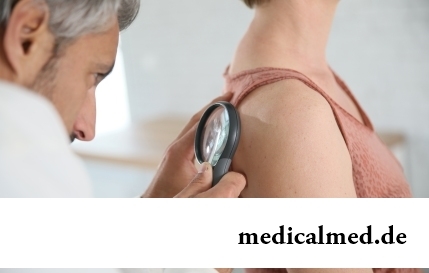
Scientists have no unambiguous opinion on a proximate cause of emergence of a carcinoma cutaneum today. Only the factors promoting development of this illness are precisely established. Treat them: long impact on skin of ultraviolet rays, radioactive...
Section: Articles about health
One of the major chemical processes happening in a human body are oxidation reactions. They go with participation of fats and carbohydrates which we receive from food, and the oxygen getting to us from air. A main goal of such reactions is obtaining the energy necessary for life activity. Unfortunately, as a result of these processes dangerous by-products – so-called free radicals are allocated. To minimize harm which they can cause to the person neo...
Section: Articles about health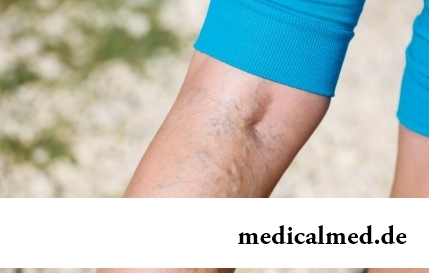
The varicosity has familiarly many, statistically, this disease more than a half of all adult population. As...
Section: Articles about health
The unpleasant feelings connected with spring breakdown are familiar almost to each of us. Often happens that in March-April on the person weakness leans: he suffers from drowsiness, complains of bad mood, loss of interest in life and failures in affairs....
Section: Articles about health
Cold, puffiness of a nose, itch, the watering eyes - characteristic symptoms of the allergic rhinitis resulting from hit of allergens (pollen, house dust, hair of animals, etc.) on a mucous membrane of a nose. Unpleasant feelings often give trouble, serving as the reason of a headache, an acrimony, sleep disorders, and in certain cases and the states close to a depression. How to get rid of undesirable satellites of a disease if near at hand there are no antiallergic...
Section: Articles about health
Not everyone can brag of the shining Hollywood smile. Even at the person who is regularly visiting the stomatologist and watching з...
Section: Articles about health
The pine is one of the most widespread plants of our woods. Its needles and pitch not without reason called by "gallipot" were since ancient times used for strengthening of protective forces of an organism, treatment of avitaminosis, anemia and many other diseases. In recent years wide п...
Section: Articles about health
Herpes simplex of the first type (the infectious disease which is shown periodic bubble rashes on lips is called) – one of the most widespread illnesses. Statistically, only 5% of inhabitants of our planet are unreceptive to its activator, and the reasons of this feature are still not found out. Other people are virus carriers....
Section: Articles about health
The thought that the mass of their body is too big at least once in life visits from 80 to 95% of women. Many...
Section: Articles about health
High temperature - a frequent symptom of such widespread diseases as a SARS, quinsy, pneumonia, etc. To reduce heat, having facilitated a condition of the patient, doctors recommend to accept antipyretics, however their use is not always possible. Too h...
Section: Articles about health
All are familiar with cold, and practically everyone believes that he has sufficient knowledge and experience that correctly to treat it. In practice most of people makes mistakes in attempts to get rid of rhinitis, and divides numerous delusions it....
Section: Articles about health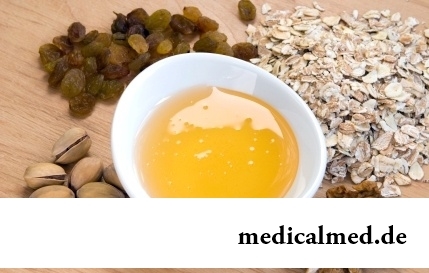
Let's begin with the fact that a separate illness which is called "adjournment of salts", just does not exist. In practice this household name of plank beds...
Section: Articles about health
The depression not without reason is considered one their main troubles of our century: for scientific and technical progress, acceleration of rate of life and a surplus of information of people it is forced to pay with stresses, negative emotions and weakening of protective forces of an organism. As a result ш...
Section: Articles about health
A little more than a century ago goat milk was a traditional food stuff of most of Russians. Unfortunately, today on tables of our compatriots it appears extremely seldom. The reason that the use of so useful product practically came to naught, not only in very modest volumes of its production and, respectively, rather high cost. Potential consumers are just insufficiently informed on unique properties of goat milk and that advantage which...
Section: Articles about health
Life of the modern child is extremely active and difficult. Information strain which is experienced by the school student and did not dream the pupil...
Section: Articles about health
All the known slogan "Protect Men!" arose not from scratch. In a sense, the nature created men much less adapted for vital disorders, than it seems at first sight. Statistically, men are ill more often...
Section: Articles about health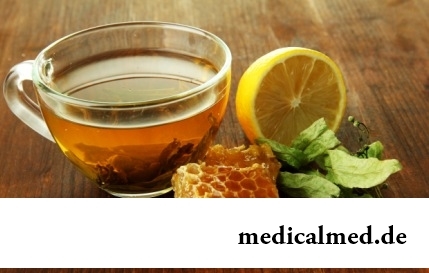
Cold – a state known to everyone which is followed by cold, cough, high temperature, a pharyngalgia. Often the first that we begin to do in hope again to become healthy – to accept medicines which are not always harmless whereas it is easy to facilitate displays of a disease by means of natural means. They not only softly eliminate disease symptoms, but also enrich the weakened organism with useful substances. We present you 8 drinks which are successfully used for...
Section: Articles about health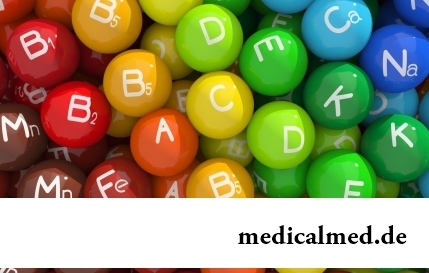
Vitamin complexes belong to the most popular drugs, probably, in our country there is no person who was not hearing about a floor...
Section: Articles about health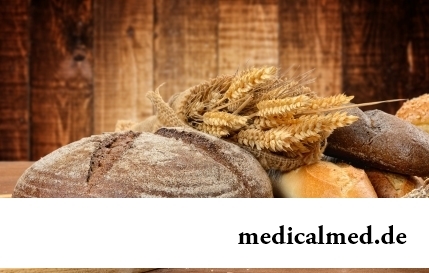
There is an opinion that at low temperatures safety of products is ensured longer and better thanks to what the refrigerator is considered the most suitable place for storage of food. In most cases it is fair, however there is a number of products, for a kotor...
Section: Articles about health
You heard that laughter prolongs life? Researchers did not manage to establish longevity direct link with sincere fun yet, but several facts confirming beneficial influence of risibility on the state of health are clinically proved....
Section: Articles about health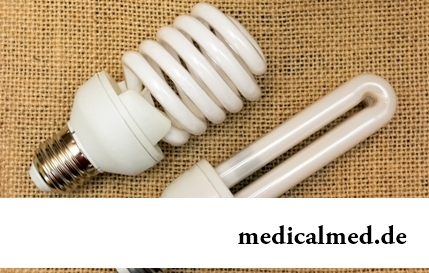
Energy saving lamps are one of the most popular products of innovative technologies, and there is no wonder: they much эк...
Section: Articles about health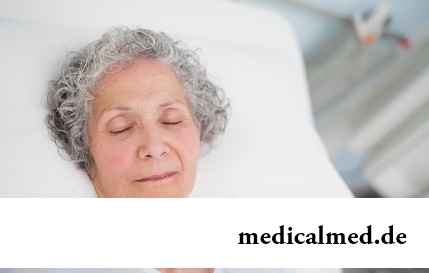
Some people consider what for medicine of the 21st century of secrets in the field of health of the person almost does not exist. It absolutely not so. The more answers scientists receive, the more the most difficult questions are raised for them by life. Besides, there are diseases, not объясн in any way...
Section: Articles about health
About 10-15 years ago existence of the computer in the apartment of the Russian was considered as a rarity and office rooms were only at the first stage of equipment by these useful devices. Today practically in each house there is a computer (and often not one), and a regular user is already every our second compatriot. Convenience and efficiency of personal computers are undoubted, but the people working with them daily have to know also about health hazard which they can predstavlit...
Section: Articles about health
